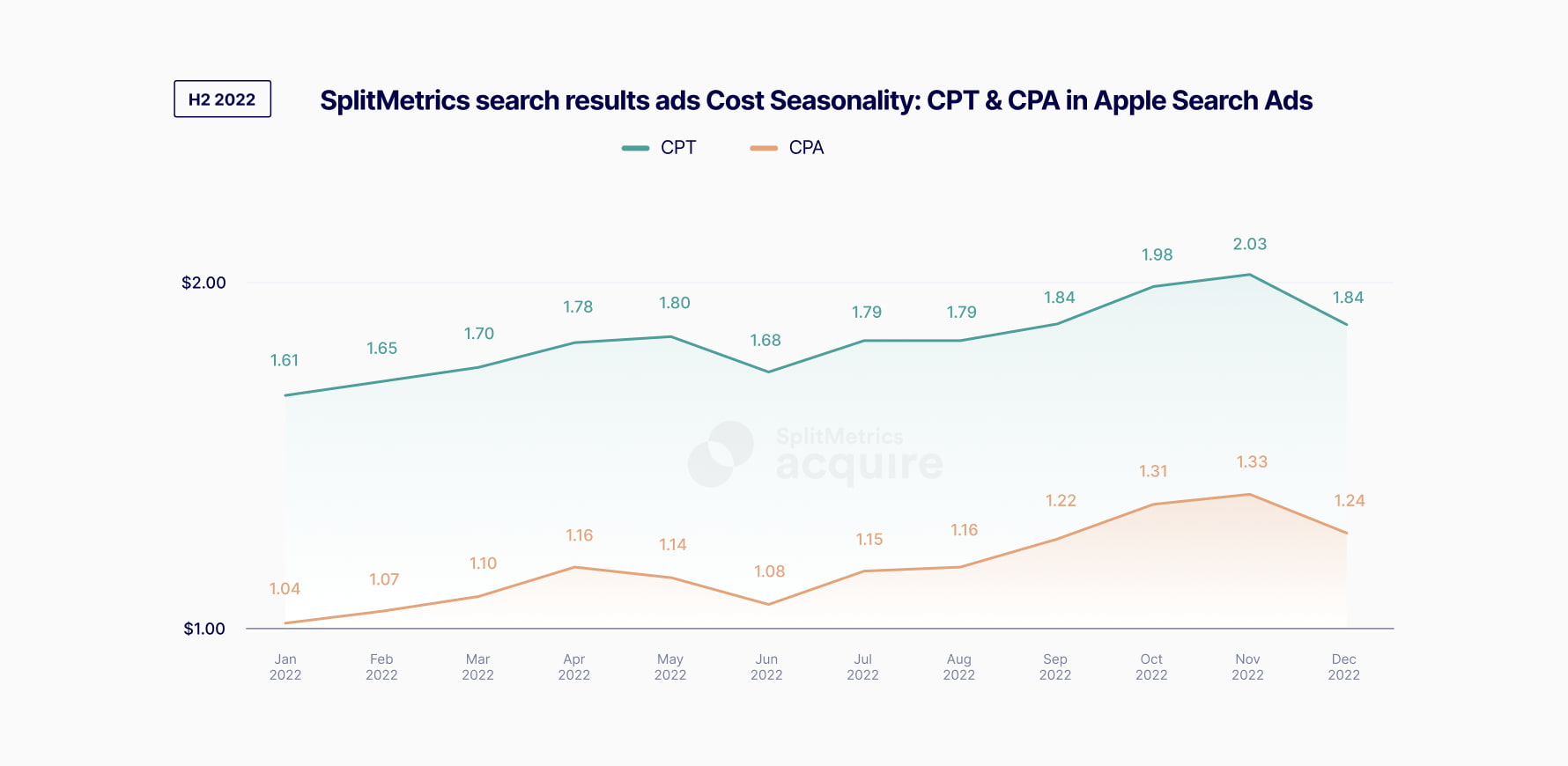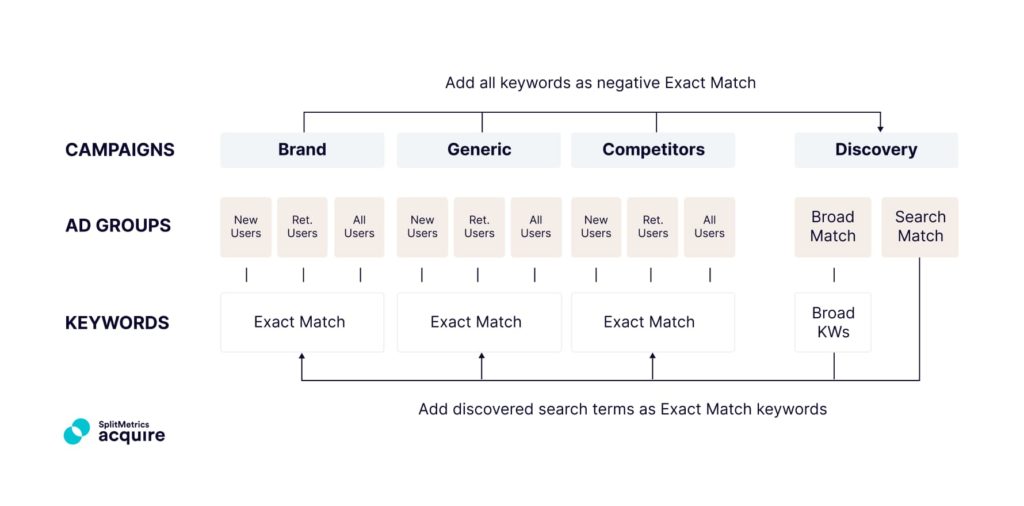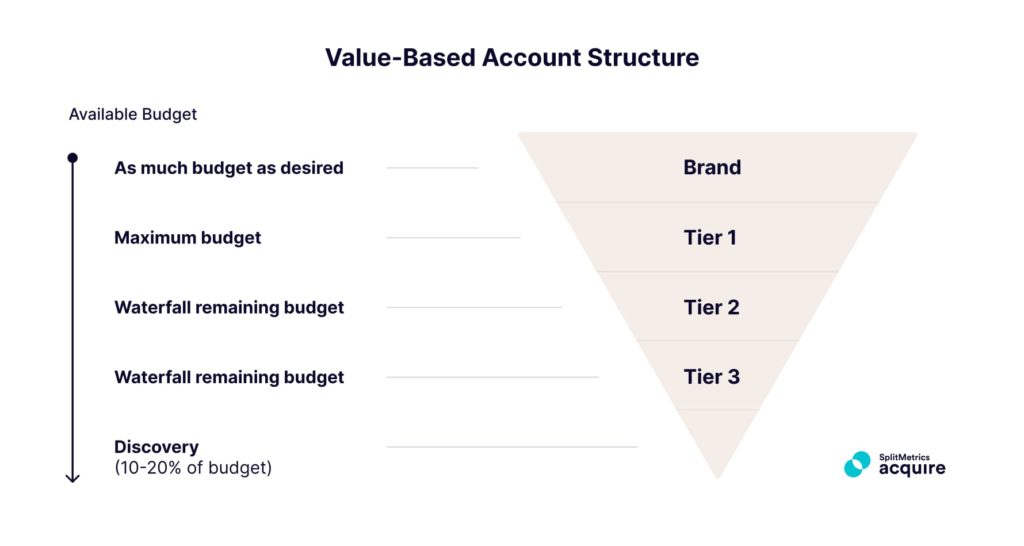Bidding in Apple Search Ads: How to Win an Auction?
 Gabriel Kuriata
Gabriel Kuriata  Gabriel Kuriata
Gabriel Kuriata How to win an auction in Apple Search Ads and make money in the process? It takes a great deal of planning, discipline and swift optimization.
In this article, we cover the best bidding strategies applicable to various campaign and keyword types, as well as ever changing circumstances in the fast paced environment that is Apple Search Ads.
Before you even start bidding, make sure that you have to essential pieces of information about your users:
Your approach to bidding in Apple Search Ads should be data-driven, free of bias, quick and flexible. It isn’t easy and certainly is time consuming – this is why more and more specialists choose to rely on automated systems for bidding and managing their campaigns.
There’s one more thing you need to check before we dive into the nuances of bidding. Make sure your app’s product page on the App Store is optimized. App store optimization is the very foundation of every single user acquisition strategy. ASO means high relevance and conversion rates – those two parameters are crucial to maintaining optimal cost of acquisition.
Your preset maximum bid (max CPT bid) will serve as a limit, preventing you from exceeding your specified bid.
Max CPT bid is the parameter to focus on. Configured on a campaign or ad group level, it reflects the maximum amount you’re willing to pay for a tap on your ad. Bidding itself is managed by Apple Search Ads automatically. It follows the principle described above. In consequence, the system will not charge you more than you want to and in any cases it will actually spend less. For more insights, we recommend reading the Set and adjust bids chapter of Apple Search Ads Help.
Given that Apple Search Ads offers two options, namely Basic and Advanced, it’s important to note that these alternatives employ distinct pricing models: Apple Search Ads Basic that follows a cost-per-install (CPI) approach and Apple Search Ads Advanced which employs a cost-per-tap (CPT) model.
In this article, we’re focusing only on Apple Search Ads Advanced, as the other is a fully automated service.
Apple Search Ads Basic is a great solution for advertisers short on time & budget. Select an app, set a daily budget and you’re good to go, as the platform handles everything automatically – from creating ads, choosing keywords and bidding. Apple Search Ads Advanced is chosen for operations at a larger scale, where proper strategy & optimization are essential.
If you wish to read more about these solutions, we strongly recommend familiarizing yourself with the official documentation on Apple Search Ads Help. For our comparison of these platforms, we encourage you to read our “Apple Search Ads Best Practices: Ultimate Guide”.
Apple Search Ads Advanced aids bidders by providing them with two indicators:
More information can be found on official help pages of Apple Search Ads. Both indicators are calculated by the platform by taking into account a wide range of factors. Always pay attention to bid insights in Apple Search Ads. However, we always encourage all app marketers to seek third party benchmarking data. The more you know, the better.
Benchmarks matter for setting realistic goals and essential to any bidding strategy. You can rely on data provided by SplitMetrics, as it gives you a reference on key performance indicators reached by best app marketers out there. It’s a good indicator of what can be accomplished on the Apple Search Ads platform with proper optimization, as well as what to expect in terms of costs.
Launching a new campaign can be challenging. Indicators provided by Apple Search Ads or benchmarks acquired through any other source can be immensely helpful, but due to the dynamic nature of auctions, what can be considered a competitive bid changes fast..
Because of this, it’s crucial to maintain systematic check-ups and pause those keywords that are underperforming or increase your max CPT values for those with good results.
For ongoing campaigns, a more nuanced approach is required. Analyze the performance of your keywords, bid history and adjust your bids accordingly. Allocate higher bids to keywords that are driving conversions and lower bids to those that are less effective. For maintenance of existing campaigns and managing their bids you need to remember about seasonality. Performance benchmarks for certain keywords can vary greatly depending on the time of the year. These fluctuations in costs of taps or acquisitions are highly dependent on an app’s category and various holidays and festive periods.

Seasonality is caused by user behavior and the reaction of competitors to it. For example, when Christmas related keywords may become more popular during the end of the year, it immediately triggers aggressive bids on them.
Familiarize yourself with the most important seasonality trends that occur on the App Store. Download the SplitMetrics Apple Search Ads Search Results Benchmarks Report.
Your bidding strategy may depend on the type of the keyword, as they reflect user intent on different levels of the funnel. Because of this, campaigns should be organized into a structure that will make applying different bidding strategies possible. Good organization of keywords helps improve the efficiency, effectiveness, and performance of your Apple Search Ads campaigns.
A campaign structure is a methodology of organizing your campaigns and ad groups in a way that helps scaling, control, reporting and management – including bidding. The two most popular structures are semantic-based (organized by keywords) and value-based ones (organized by their value). Here’s an example of a semantic based account structure:

Following our example of optimizing bidding for new campaigns: suppose that a newly discovered keyword in a Discovery campaign is promising. During our weekly check up we move that keyword as “exact match” to one of the three other categories, depending on what the keyword is. There, we can proceed to increase our bid, hoping for more conversions.The semantic based account structure is universal and recommended by Apple Search Ads. It also serves as the basis for this article. It’s not the only one however. For example, the image below depicts a value based account structure:

Read more about campaign structures in our guides: How to Build Semantics-Based Apple Search Ads Account Structure and Value-Based Apple Search Ads Account Structure.
Now that we’ve introduced campaign structures, let’s discuss how bidding strategies can vary for each of the keyword types that are included in semantic based ones.
Brand keywords are specific to your app and represent its name or variations of it. Bidding on brand keywords helps you capture users who are already familiar with your app. Since competition for these keywords is generally lower, you may opt for more moderate bids. However, don’t neglect your brand campaigns by any means! If you do, their lower level of entry may encourage your competitors to bid for them and take over some part of your traffic.
Luckily, you can take advantage of this strategy too. Bidding on branded keywords of your competitors can attract users searching for alternatives, provided you approach this strategy carefully. Make sure your ad and product page clearly highlight your app’s unique value proposition compared to the competitor.
Generic keywords are more general and relate to the category or functionality of your app. These keywords have higher search volume but also stronger competition. Bidding on generic keywords requires a strategic balance between bid amount and ad relevance.
Discovery keywords are related to broader topics, often not directly related to your app. They can help you tap into new audiences and increase brand visibility. However, bidding on discovery keywords requires a cautious approach, as relevance is critical to ensure your ad isn’t perceived as misleading. Take advantage of the Search Match function in Apple Search Ads – it will be a continuous source of new keywords. Make sure to evaluate keywords from the Discovery group at least weekly and move them to Brand, Competitor or Generic groups to increase their bids.
Additionally, should you notice that keywords from these three groups are not performing well, pause them quickly and add them as negative, exact match keywords to your Discovery campaign. It will improve the quality of incoming new suggestions.
Clear evaluation criteria and automation will help you achieve maximum efficiency in managing your keywords across campaigns.
SplitMetrics Acquire can evaluate and change the status of keywords automatically according to the rules you set. Protect yourself from over or underspending by reacting immediately to dynamic conditions with automation.
SplitMetrics Acquire offers over 200 automation rules for professionals to make sure that raising and lowering the bids is always swift and data-driven. Find out just how powerful our system is!
Increasing your bids can lead to higher ad placements and more visibility. This can be effective when you notice that certain keywords are driving significant conversions. Gradually raise the bids for these keywords to capture even more qualified traffic.
This can be accomplished with automation rules in SplitMetrics Acquire as well. Multiple rules with varying thresholds can trigger max CPT bid increases. Many other metrics, such as CPA (Cost per Action) and ROAS (Return on Ad Spend) can also be used. For more insights on bid optimization and these two metrics, please read this article.
Not all keywords perform equally well. If you’re noticing high spend with minimal returns, consider lowering your bids for underperforming keywords. This will help you allocate your budget more efficiently and focus on keywords that drive better results.
SplitMetrics Acquire grants one more level of automation with Bid Strategy. It’s a set of smart algorithms for automatic bidding designed for enabling mobile developers to optimize Apple Search Ads campaigns towards target KPIs: cost-per-action (CPA) and return on ad spend (ROAS). Want to find out what it can do?
Here’s a collection of tips & best practices to wrap up.
Find out how iSharing automated Apple Search Ads with SplitMetrics Acquire to manage it in 17 markets. SplitMetrics Acquire allows for automation of all processes related to Apple Search Ads management, like performance based adjustments to bids, moving of keywords between ad groups or even changes to CPA goals. Find out how these features helped iSharing drive up to 81% user engagement in some markets. Read the full case study of iSharing.
Mastering Apple Search Ads bidding requires a combination of strategic thinking, data analysis, and constant optimization. By understanding the nuances of bidding, choosing the right keywords, and employing effective strategies, you can increase your app’s visibility, attract relevant users, and achieve your advertising goals.
It isn’t an easy task, as all bidding decisions should be data-driven and quick in response to the fast paced environment of Apple Search Ads. However, when your goals and evaluation criteria are clear – you can make decisions almost instantly.
This is the reason for the increasing adoption of automation services for managing Apple Search Ads. With over 200 automation rules or a full automation service (Bid Strategy) and a wide range of assisting solutions, systems such as SplitMetrics Acquire can react to changes immediately (based on your criteria), taking the burden of bid management off your chest.